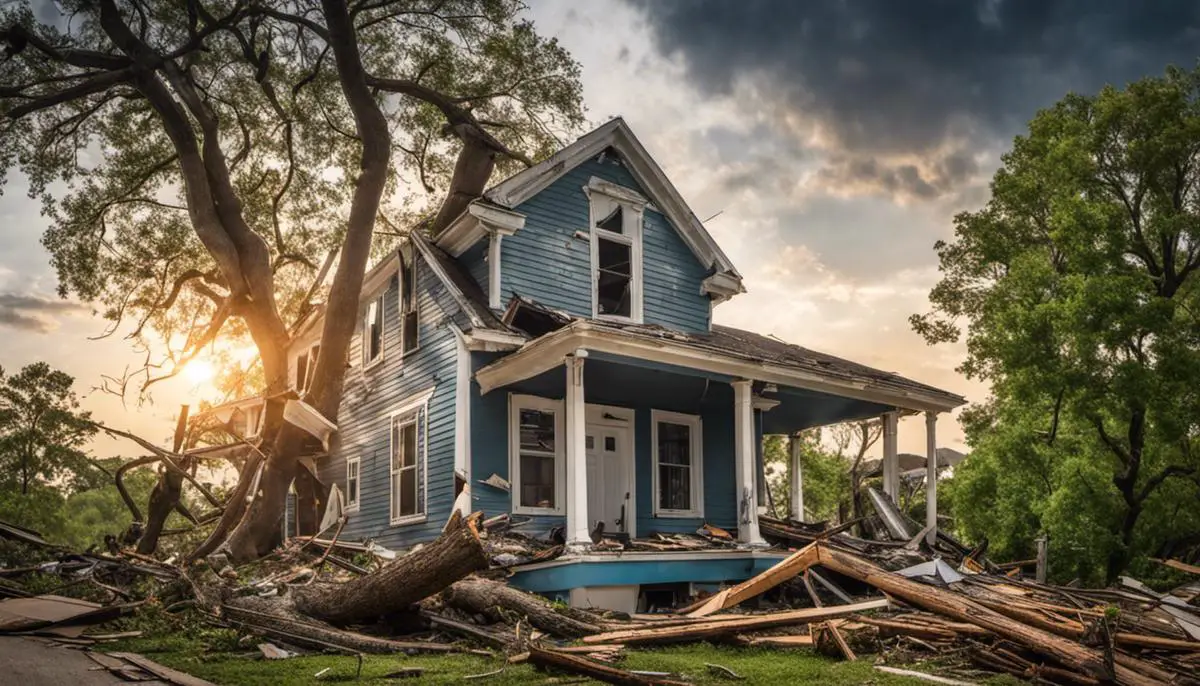The relentless wrath of a hurricane leaves behind a broad expanse of ruin and debris, but the resilience of communities forged in the tempest moves us to clean it all up, rebuild and rise stronger. The path to this revitalization begins with careful understanding and navigating through the aftermath. It involves getting accustomed to the frequent types of hurricane damage like water intrusion, structural impairment, and scattered rubble. Our Post-Hurricane Cleanup Guide demystifies the process, from debris management to insurance claims
By comprehending the impact of hurricanes on homes, infrastructure, and the environment, we can equip ourselves with knowledge crucial to shape and strategize our cleanup approach. However, this task is not void of potential dangers; therefore, safety is a paramount concern. Awareness about the hazards of standing water, active electrical wires, sharp debris, and shaky structures, coupled with the effective use of Personal Protective Equipment (PPE), is instrumental in preventing mishaps during post-hurricane operations.
Understanding Hurricane Aftermath
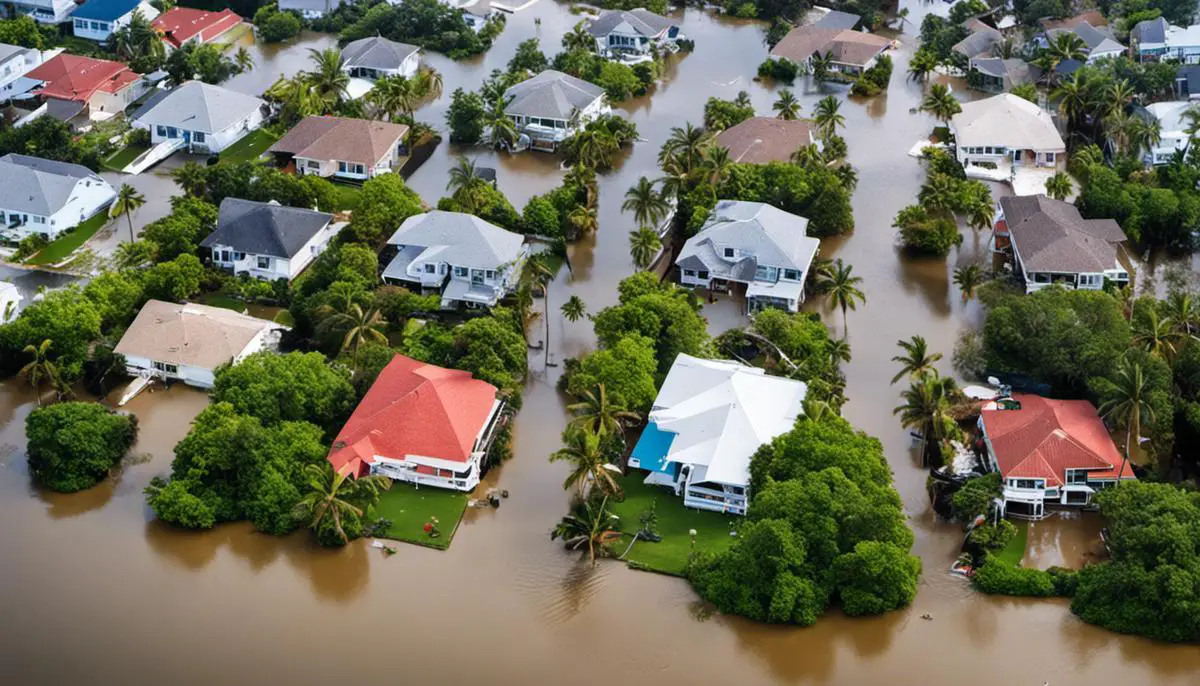
Understanding the Impact of Hurricanes on Homes
Hurricanes leave a trail of destruction in their wake, significantly affecting homes. Houses in the direct path of hurricanes often endure severe water damage as torrential rains pour for hours or even days. This water damage can result in damp walls, saturated carpets, and can even compromise the structural integrity of the home.
In addition to water damage, one must not overlook the physical harm resulting from hurricane-caused winds. High-velocity winds can rip off roofs, uproot trees, and cause other forms of structural damage. This wind damage may also lead to the complete collapse of properties in extreme circumstances.
Finally, hurricanes distribute a vast amount of debris. The high-speed winds scatter everything from branches and entire trees to shingles and entire sections of houses. Such scenarios require substantial cleanup efforts.
Impacts on Infrastructure
The aftermath of a hurricane isn’t just limited to residential areas. Key elements of a region’s infrastructure, including roads, power lines, bridges, and utility buildings, also bear the brunt of the hurricane’s wrath. Flooding from storm surges and continual rains can erode roads and bridges, making them impassable and hindering recovery efforts.
Similarly, the violent winds hurricanes bring can down power lines, leading to widespread power outages. These blackouts could last from several days to several weeks, depending on the extent of the damage and the speed of the recovery and restoration process.
Environmental Effects of Hurricanes
Hurricanes also bring profound and long-lasting impacts to the environment. Along the coast, storm surges and high winds cause significant erosion. This loss of land can reshape coastal areas and severely affect local ecosystems. Moreover, the downing of trees and other vegetation can result in loss of habitat for wildlife.
Furthermore, high levels of rainfall can lead to contaminated water supplies due to disruption and overflow of sewer infrastructure, posing serious health risks to humans and animals alike.
Understanding the extensive impact hurricanes have on homes, infrastructure, and the environment is key in forming a meticulous and comprehensive cleanup approach. Given the different types of damage hurricanes cause, it’s clear that the post-hurricane cleanup effort often demands multi-pronged strategies.
Safety Measures
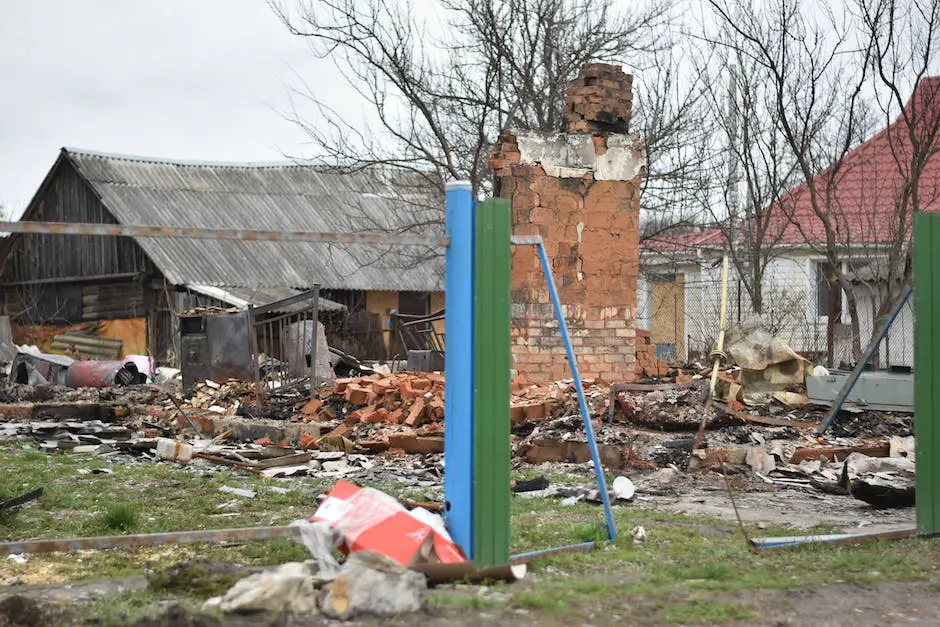
Recognizing Post-Hurricane Dangers
Following a hurricane, a range of residual threats can persist. These may include standing water, live electrical wires, sharp debris, and unstable structures. It’s important to approach each with caution to prevent accidents and injuries.
Standing water may seem harmless, but it can pose serious risks. It can hide hazards like deep puddles or sharp objects, contaminate areas with toxic or infectious materials, and breed mosquitos carrying diseases. If necessary to enter floodwaters, wear proper protective gear such as rubber boots and gloves, and refrain from letting children play in or around the water.
Live electrical wires can be lethal and should always be considered dangerous. If you suspect a wire is live, stay at least 10 feet away from it and notify your local utility company immediately. Avoid touching anything that might be in contact with the wire, including water and metal objects.
Sharp debris can result in cuts, punctures, and other physical injuries. It’s essential to wear protective gloves and thick-soled boots when dealing with post-hurricane waste.
Unstable structures pose a significant risk as they can collapse without warning. Be cautious when approaching or entering damaged buildings, and avoid those with visible structural damage or those declared unsafe by officials.
Utilizing Personal Protective Equipment (PPE)
Effective use of Personal Protective Equipment (PPE) can significantly reduce the risk of injury during post-hurricane cleanup. PPE includes protective clothing, helmets, goggles, or other garments designed to safeguard the wearer’s body from injury or infection.
Ensure that your PPE is in good condition and fits you properly. Ill-fitted equipment will not provide proper protection, and damaged equipment should be replaced immediately.
Goggles should be worn to protect the eyes from flying debris during cleanup activities. Work gloves are essential for handling rough items and preventing cuts. High-visibility clothing can be useful, especially when working in a team or in vehicle areas.
When dealing with standing water or damp environments, waterproof boots and gloves are necessary. In areas with suspected mold growth from water damage, wear a mask or a respirator with a NIOSH rating of N95 or higher to prevent inhalation of mold spores.
Amid a post-hurricane cleanup, it’s also important to stay hydrated, take regular breaks, and use sunscreen if working outside.
Safety Preparations Before Cleanup
Before starting cleanup work, check with local officials or disaster response coordinators for specific instructions or regulations. Be sure to follow their guidance to ensure your cleanup efforts are both effective and safe.
Get a first aid kit ready for minor injuries and ensure you have a communication plan, emergency contacts, and local emergency service numbers. Be aware of the symptoms of heat exhaustion if working in hot weather, and keep an eye on team members for signs of mental or emotional stress. Post-hurricane recovery is a community effort — look out for each other, and be safe.
Damage Assessment
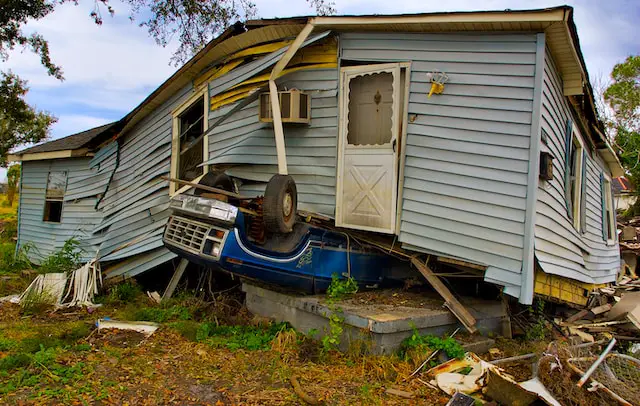
Initial Property Examination
After a hurricane has passed and it is safe to return, the first step in assessing hurricane damage is conducting an initial property examination. This involves a visual observation of the exterior and interior of the property. Look for obvious signs of hurricane damage such as missing shingles, broken windows, or collapsed walls. Check the area surrounding the property for fallen trees, damaged power lines, or flood-related issues – these could not only affect your property but also the safety surrounding it.
Structural Damage Assessment
The next step is to inspect for structural damage, which can be both visible and hidden. Visible signs of structural damage could include cracks in the walls, significant leaning, uneven floors, or sagging ceilings. It is important to ensure the building’s integrity hasn’t been compromised in a way that makes it dangerous to inhabit.
Remember, some structural damage isn’t immediately visible. Damaged roofs or basements might leak water into parts of the building that aren’t directly visible, causing unseen damage. Ideally, hire a professional engineer or building inspector to do a thorough assessment and document any findings as they might need to be presented for an insurance claim.
Mold and Mildew Evaluation
One common and potentially dangerous issue that can arise after a hurricane is mold and mildew growth. This is particularly a concern if the property experienced flooding or major water damage. Signs of mold can include visible spotting on walls and floors, a musty odor, or a spike in allergy-like symptoms amongst occupants.
Professional mold remediators should be sought if any signs of mold are found as they can do a thorough evaluation and treatment. Some molds are toxic and can pose serious health conditions; thus, professional treatment is necessary.
Document Everything
It is crucial to document all findings that result from the assessment. Take detailed notes and photos of the damage. Itemize and value damaged property, including structural damage and self-owned belongings. This is necessary for insurance claims and, therefore, must be done as accurately and comprehensively as possible.
Lastlly, remember to safely store and/or back up your findings as it is crucial data that will be of great assistance in insurance claims and recovery plans. Prevailing in insurance claims often is dependent on the quality and comprehensiveness of your claim data; hence it is important not to overlook this step in the damage assessment process.
Debris Management
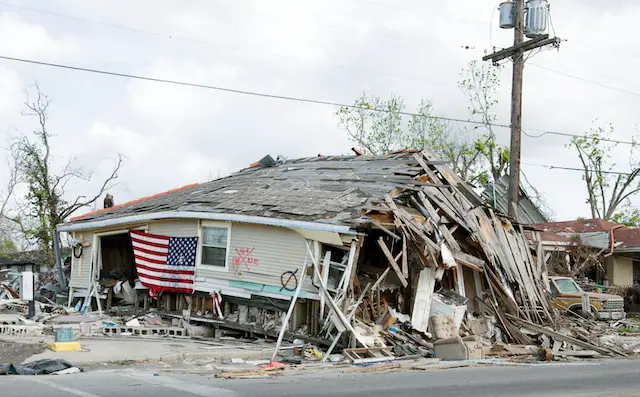
Understanding Debris Management
In the aftermath of a hurricane, effective debris management is crucial to ensure safety and expedite the recovery process. This begins with sorting and disposing of post-hurricane debris appropriately. After a hurricane, the generated debris typically includes household waste, appliances, electronics, paints, pesticides, and other hazardous waste. It’s essential to sort out the hazardous waste from common household waste for proper disposal and recycling.
Sorting Out Debris After a Hurricane
While sorting out your waste, it’s important to separate regular household debris from hazardous materials. Regular household debris includes items like food waste, paper, cardboard, and non-recyclable materials. On the other hand, hazardous materials include broken appliances, electronics, cans of paint, pesticides, and other similar items.
To start, divide your debris into several piles or containers. Regular household waste should go into your usual waste bin, whereas hazardous waste must be kept in a separate, clearly marked container.
Proper Methods to Dispose of Hazardous Waste
When it comes to disposing of hazardous waste, proper steps need to be taken due to the material’s dangerous nature. Appliances and electronics, properly referred to as e-waste, can often be brought to specified drop-off locations that accept these materials for recycling. Check for any local e-waste recycling programs in your area.
For harmful substances like paints or pesticides, these should be disposed of at a household hazardous waste facility. These types of substances should never be thrown into regular household trash or down the drain, as they can contaminate water and soil.
Handling Household Waste and Debris
Regular household waste can usually be disposed of as you would typically, with recyclable items being separated where applicable. However, it’s important to ensure all waste is properly bagged to prevent scattering during collection and transportation.
Large debris such as branches, tree trunks, and pieces of damaged houses can be piled on curbs for pick up by your city or county’s debris removal services, depending on local guidelines in your area. Once the hazardous waste has been separated, make sure to move any remaining debris to the curb for disposal, making it easy for cleanup crews to collect.
Note Well: Safety First
Always remember safety in the cleanup process post-hurricane. When handling debris, it’s important to wear protective gear, including heavy-duty gloves, safety glasses, sturdy footwear, and long-sleeved shirts. Be cautious of sharp objects and hazardous materials and seek professional assistance when required.
Remember, it’s not a rush, and cleanup can take time, the priority during this process should always be safety first, effectiveness second.
Effective Cleaning Techniques
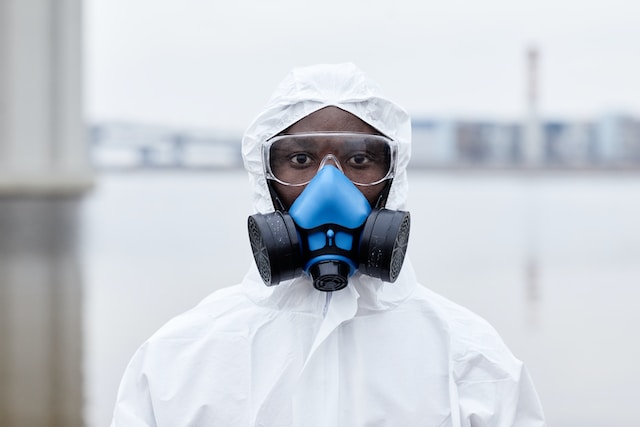
Identifying Damages and Creating a Plan
Before you get started on cleaning, it’s crucial to identify the damages caused by the hurricane. Take note of the areas in your home that have been significantly affected, whether there’s water damage, debris, or structural damage. With this information, you can create an effective clean-up plan.
Using Appropriate Cleaning Solutions
In accordance with the Centers for Disease Control and Prevention, mixing a cup of bleach to five gallons of water should provide an effective cleaning solution. It can be used to sanitize areas that have been exposed to floodwaters. However, it’s crucial to remember to wear gloves and protective eyewear while using this mixture.
Cleaning and Drying Out Property
Any areas that have been exposed to standing water, including furniture, walls, and carpets, will need to be cleaned and dried out quickly and thoroughly to prevent mold and bacteria growth. Use a wet vacuum, ideally of a commercial-grade, to remove the flood water and follow up with fans or dehumidifiers to help dry out the affected areas.
Proper Ventilation
Proper ventilation is key to drying out your home effectively and keeping your indoor air healthy. Open your windows and doors to allow fresh air to circulate, and use fans to speed up the drying process. Be sure any damp areas are thoroughly dried to prevent the development of bacteria and mold.
Disposing Debris and Damaged Items
When handling debris, it’s essential to use sturdy gloves and be cautious of sharp objects. Dispose of any debris, ruined furniture, or other items that can’t be salvaged following local rules and regulations.
Checking for Mold
Mold can be a significant issue after a hurricane due to the amount of water involved. Check areas that have been exposed to standing water thoroughly. If you see or smell mold, it’s recommended you call a professional mold remediation company to ensure it’s dealt with correctly.
Essential Precautions
Safety is of utmost importance, and as such, if there are structural issues in your home–crumbling walls, ceilings, or unstable floors, refrain from cleaning and contact a professional. Be sure to wash your hands thoroughly after handling anything that has been contaminated by floodwaters. Always wear sturdy shoes to prevent injuries from debris or sharp objects.
How FEMA Can Help
When disaster strikes, the Federal Emergency Management Agency (FEMA) is often one of the first organizations on the scene to provide immediate relief. From offering financial assistance for temporary housing to helping you rebuild your home, FEMA’s range of services is designed to get you back on your feet as quickly as possible.
- Financial Assistance: FEMA provides grants that don’t need to be repaid. These grants cover expenses such as rent, home repair, and even medical or dental costs related to the disaster.
- Temporary Housing: If your home is uninhabitable, FEMA can assist in finding you a temporary place to stay while repairs are being made.
- Home Repairs: For homeowners, FEMA can provide grants to repair damage that isn’t covered by insurance. This can include structural elements of the home, windows, and flooring.
- Crisis Counseling: Emotional support is crucial in times of disaster. FEMA provides crisis counseling for those who have experienced trauma.
- Legal Services: Navigating the legal landscape post-disaster can be tricky. FEMA offers free legal services to help you with issues such as insurance claims and home repair contracts.
- Unemployment Assistance: If you’ve lost your job due to a disaster, FEMA can guide you through the process of applying for unemployment benefits.
Understanding the full scope of what FEMA offers can significantly ease the post-disaster recovery process. For more detailed information, visit FEMA’s Individual Assistance Program.
Feel free to incorporate this section into your article to provide your readers with valuable information on how FEMA can assist in times of need.
Final Thoughts on Our Post-Hurricane Cleanup
You’ve now embarked on the journey of understanding hurricane aftermath and the importance of proper cleanup protocols. The comprehensive knowledge about safety measures, accurate damage evaluation, practical debris management, and effective cleaning methods empowers you in tackling the aftereffects of a hurricane. With this information, you adapt better in the face of a disaster, prepare an accurate insurance claim, and expedite the return to normalcy. Beyond the technicalities of cleaning, let us remember the larger framework which is the rebuilding of our lives and communities. Owning the responsibility, working hand in hand, we rise above such catastrophes, coming out stronger and more united. Let’s fortify our resilience and readiness for any future calamity, buoyed by optimism, cooperation, and informed action.
